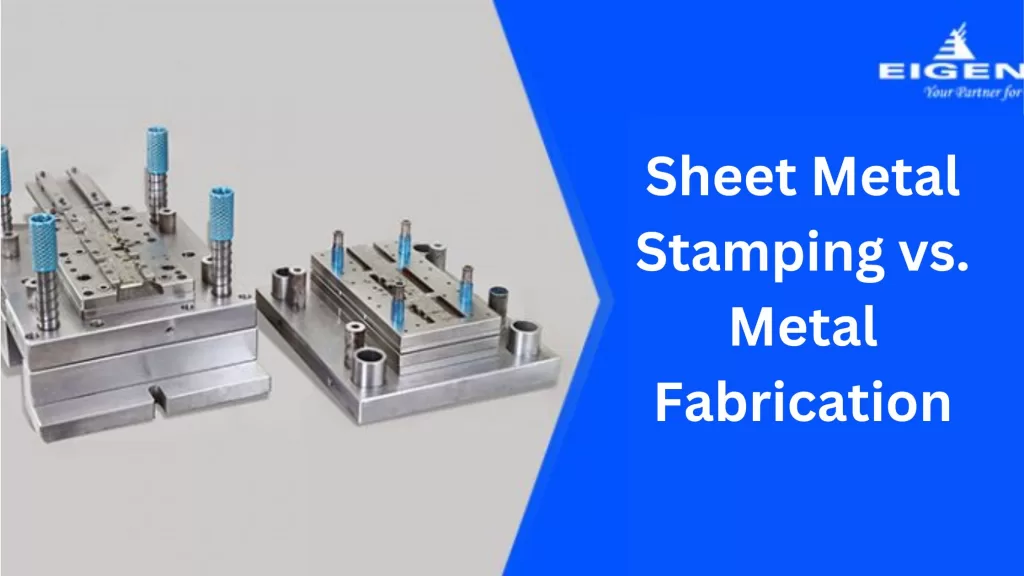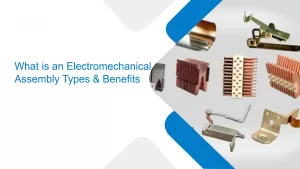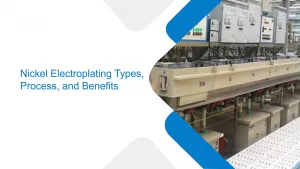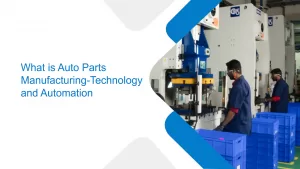Sheet Metal Stamping vs. Metal Fabrication
- Metal Stamping |
- Feb 12, 2024

A substantial percentage of materials that people see and use daily are made of metal parts. It is easy to neglect metallic components that exist in multiple ways due to the fact they are used in a lot of matters without any problem. But to build them, one needs to put together separate pieces of metal to make entire items like machines, automobile, aircrafts and more.
Metal can be shaped and cut through fabricators into smaller or more finely cut shapes in sheets. These smaller parts can be made in many ways, but the most broadly used ones are sheet metal stamping and metal fabrication. Those two techniques are often used in commercial manufacturing despite their inherent differences. So, it is important to understand the variations between those procedures if you want to choose the best one for producing metal goods:
Sheet Metal Stamping
In sheet metallic stamping, the product is bent, punched, or flanged using a stamping press. Stamping is carried in various degrees or discrete portions. The industrial widespread is coil-fed press device. Using a progressive die, this approach can produce products simultaneously.
When generating high-volume replicas of parts, sheet metallic stamping is usually used. Precision stamping is used when generating specific objects that need to meet extraordinarily precise requirements. When making objects that are two or three dimensions, it is best to apply a CNC system for bending and forming.
As sheet metal stamping dies are so low-priced, a lot of businesses choose them. Precision stamping is a speedier alternative to manufacturing complex parts. For large manufacturing runs, metal stamping becomes necessary.
Why Choose Sheet Metal Stamping?
Sheet metal stamping is an effective way to make items that require customization. Compared to fabrication, this method can be effective. Generally speaking, sheet metal stamping companies offer low-cost stamping for mid-to-large quantity manufacturing. Precision stamping permits the creation of complex products with a high degree of personalisation.
Metal stamping benefits:
- Larger runs at a lower cost in line with a piece
- Capable of creating elaborate and intricate designs
- Incredibly reproducible
- Accessible secondary processing
What is Metal Fabrication?
CNC cutters are used in sheet metal fabrication to reduce, drill, or weld the product. Tapping or the use of tapping machines to roll threads are the strategies used in this fabrication. Folding may also be performed with the help of striking, using press brakes, or the usage of folders. Once assembled, the person pieces can be fixed together using adhesives, crimped seams, welding, or riveting.
With fabrication, customization alternatives are limited. Lead times for problematic designs are shorter. It is simple to alter a design on the fly with this system because of its incredible degree of flexibility.
Metallic fabrication has favored the help of many businesses due to its short design-to-manufacturing turnaround. Similar to this, it is not prohibitively expensive to run a small volume production in fabrication.
Why pick Metal Fabrication?
Metal fabrication advantages:
- Quick prototyping
- Versatile manufacturing methods, including shearing and laser-reducing
- Various personalisation
- Simple and rapid layout adjustments
Metal fabrication involves extra attempts and longer manufacturing time, although it is the technique used in many metal production packages. More regular than not, it is also impractical to fabricate components and additives with extra intricate styles because of the increased prices of materials as compared to stamping.
The amount of work needed will change based on what you expect. The cost of labour will be higher in the most advanced scenarios, so that should be considered. The time required to build a single unit can be significantly increased by any complicated pieces or unusual shapes. When fabricating, the uniformity is not as consistent as it is with stamping dies.
Difference Between Sheet Metal Stamping and Metal Fabrication
Here’s a simple explanation of the difference between sheet metal stamping and metal fabrication:
- Tools: Custom tools and specialised systems are wanted for sheet metal stamping. However, it is not needed for metallic fabrication.
- Production Quantity: Prototypes, one-off portions, and low-volume manufacturing are better served with the help of metallic fabrication, while sheet metallic stamping works well for huge-scale operations.
- Production Time: Compared to sheet steel stamping, steel fabrication takes a longer production period and extra manpower.
- Cost of Materials: Compared to sheet steel stamping, fabrication usually requires extra fabric prices.
- Complex Elements: Fabrication might not be able to produce the difficult portions and additives wanted for stamping, which can be done easily with sheet metal stamping.
Final thoughts
Sheet metal fabrication and stamping are both standard procedures followed in the manufacturing process. Depending on the application, you have to choose between the techniques. It will be more beneficial to use one of these two methods than the other.
Generally, sheet metal stamping has a lot more advantages than metal fabrication, which makes it a favorable option for many businesses. So, choose the right sheet metal stamping manufacturer suitable for your needs.
Ujjwal handles crucial roles like AGM Marketing, researcher, and is an author for KDDL – Eigen. He currently works with Eigen for implementing proven techniques and strategies for marketing plans on online and offline platforms. An expert in efficiently executing SEO, SEM, email marketing, social media marketing, PR marketing, Print campaigns, etc. Ujjwal has coordinated an efficient marketing team on various creative campaigns and programmatic buying to support various digital cross-promotion efforts. Implement efficient search optimization strategies with the help of collateral material and metrics.
In his former years, Ujjwal has years of experience in a managerial role for several reputed companies. His years of experience combined with the flair of writing help him come up with result oriented strategies for Eigen.




